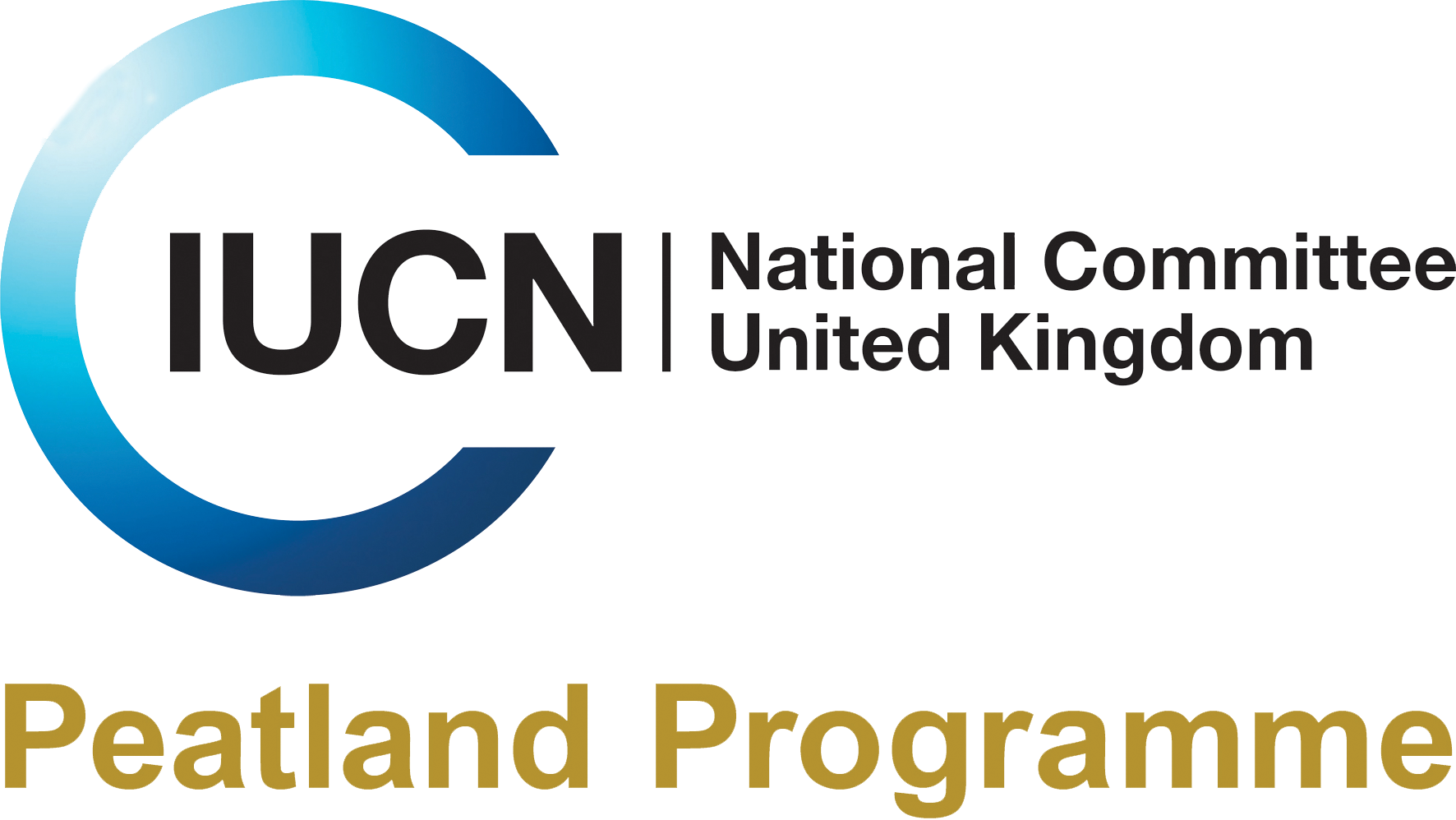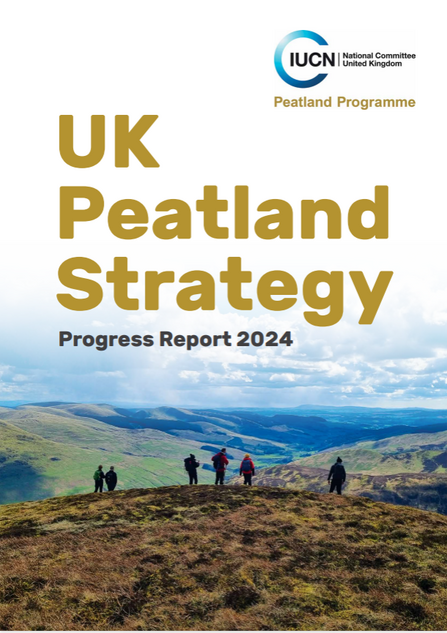The 2024 Progress Report looks at the extent of progress made towards the outcomes and milestones in the UK Peatland Strategy (2018) and identifies where improvements need to be made to reach the UK’s domestic and international commitments.
Download a copy of the report here.
The UK Peatland Strategy aims to drive and co-ordinate action across the UK, supported by country level plans that will establish a course for peatland conservation and management at a more detailed level.

The UK Peatland Strategy was launched in April 2018 by the IUCN UK Peatland Programme after more than a decade of work by the collective partnership - through steering groups, workshops, conference feedback and direct consultation.
This strategy recognises there are different peatlands and types of pressures within the UK and seeks to provide common goals across the four devolved administrations of England, Northern Ireland, Scotland and Wales.
It is a Strategy for the UK and its peatlands. It reflects a broad, partnership view on the actions which needs to be taken to secure not only the future of peatlands but also the benefits they provide to society.
Why is this strategy needed?
Peatlands are special. They are also in trouble: a number of pressures have led to widespread damage and degradation.
The UK Peatland Strategy was developed to:
- Support co-ordinated large-scale action to conserve and restore the UK’s peatlands;
- Bring about more widespread sustainable management;
- Help prioritise and ensure sufficient resources are available for delivery;
- Continue to promote partnership working and knowledge sharing across different sectors and countries;
- To co-ordinate monitoring and reporting of peatland condition and functionality to allow the UK to report to EU and International obligations including National Green House Gas (GHG) accounting and Biodiversity conventions amongst others;
- Implement international recommendations for peatlands including those from the Food and Agriculture Organisation of the United Nations (UNFAO) and Wetlands International;
- Deliver a strong, unified and cohesive message to funders and policy makers that peatland conservation, restoration and sustainable management should remain high on the agenda.
In 2013, recognising the impact of past land use on the condition of our peatland ecosystems the four devolved UK Governments outlined the actions and intentions of Defra, the Scottish Government, the Welsh Government and the Northern Ireland Executive to achieve a collective aim of enhancing the natural capital of UK peatlands.
Progress across the four UK devolved nations
The following sections outline progress across the four devolved nations of the UK in developing and implementing peatland strategy at a national level.
England Peat Action Plan
The England Peat Action Plan is an integrated plan for the management, protection and restoration of England's upland and lowland peatlands, so that they deliver benefits for nature and the climate.
Published: 18 May 2021.
From: Department for Environment, Food & Rural Affairs (Defra).
The England Peat Action Plan sets out the government’s long-term vision for the management, protection and restoration of our peatlands, so that they provide a wide range of benefits to wildlife, people and the planet. To implement this vision, the plan includes:
- the announcement of the Nature for Climate Peatland Grant Scheme through the Nature for Climate Fund;
- a commitment to end the use of peat in the amateur horticulture sector;
- a new spatial map of England’s peatlands.
The action plan is part of a series of announcements on nature and climate and sits alongside the England Trees Action Plan.
Read more and access The England Peat Action Plan on the Defra website.
Northern Ireland Peatland Strategy 2021-2040
Draft published as part of the NI Peatland Strategy Consultation in June 2021.
From: Department of Agriculture, Environment and Rural Affairs (DAERA).
In 2021, the NI Peatland Strategy Consultation document provided an outline of the policy drivers for the development of the strategy, the ecosystem services that semi-natural peatlands in Northern Ireland provide and the current factors affecting Northern Ireland's semi-natural peatlands. It also set out the strategic objectives and actions considered necessary to ensure that Northern Ireland's semi-natural peatlands are conserved and restored to functioning ecosystems.
Views from all sectors, age-groups, organisations and individuals and consultation responses were encouraged and will be used to inform the Northern Ireland Peatland Strategy and the subsequent Implementation Plan.
Northern Ireland Peatland Strategy – Equality Impact Assessment
From: Department of Agriculture, Environment and Rural Affairs (DAERA).
In 2022, an Equality Impact Assessment (EQIA) was carried out for the NI Peatland Strategy. An analysis of relevant evidence was considered to help identify potential impacts resulting from the implementation of the strategy on the nine Section 75 Equality Groups. A number of potential mitigating measures were also suggested. Stakeholders were invited to consider the information included within the EQIA and provide feedback to inform the forthcoming Implementation Plan.
Publication of the NI Peatland Strategy has been delayed by the lack of an active parliament from June 2022 – February 2024.
Scotland’s National Peatland Plan
From NatureScot:
Scotland’s first national peatland plan sets out the many benefits of healthy peatlands and how we can improve peatland that is in poor condition.
Peatlands cover more than 20% of Scotland’s land area. Healthy peat plays a vital role in carbon storage and combating the effects of climate change, and in maintaining Scotland’s water quality and rich biodiversity. Peatlands reduce flood risk and support farming and crofting. They are also part of the wild landscapes that attract tourists to Scotland.
Much of Scotland's peatland is in poor condition and requires suitable management or even restoration.
Managing and restoring our peatlands to get the best we can from them requires a joint approach involving landowners and managers, scientific and technical expertise and appropriate levels of funding, together with the necessary policies and guidance to steer activities in the desired direction.
Scientific and technical expertise, funding, and policy and guidance are needed to support landowners and land managers in this work.
Read Scotland’s National Peatland Plan on the NatureScot website.
Wales’ National Peatland Action Programme
The National Peatland Action Programme is a 5 year plan of peatland restoration in Wales.
Welsh peatlands need urgent action to address the nature and climate emergencies.
Peatlands support a variety of habitats and species, they:
- capture and store carbon
- regulate greenhouse gases
- maintain biodiversity
- regulate water.
Funded by Welsh Government, this programme was set up to coordinate peatland restoration action in Wales.
Restoration work
The National Peatland Action Programme has six priorities:
- Peatland erosion
- Peatland drainage
- Sustainable management of blanket peats
- Sustainable management of lowland peats
- The restoration of afforested peatlands
- The gradual restoration of our highest carbon peatlands.
Restoration action on over 1,650 hectares in the first two years (2020-22) means the programme surpassed its initial restoration targets of 600-800 hectares of public and private land every year.
The programme will also safeguard peatlands that are in good and recovering condition.
Find out more about Wales’ National Peatland Programme on the Natural Resources Wales website.




